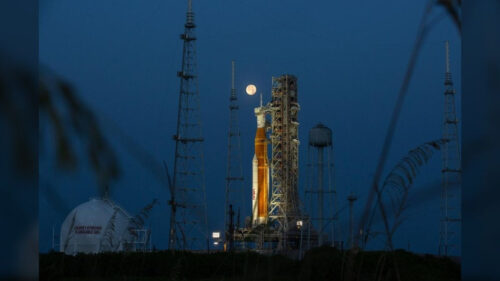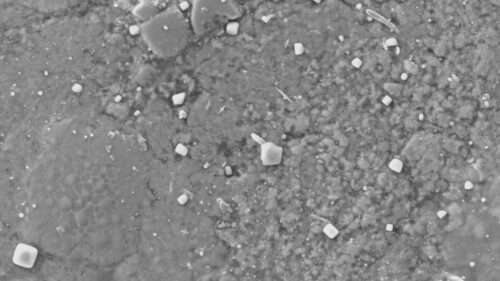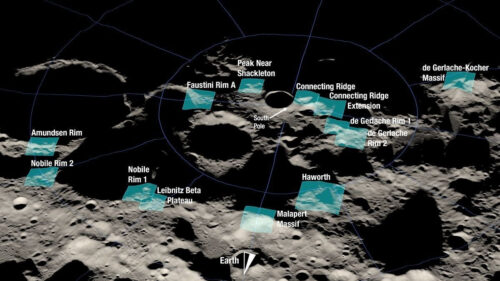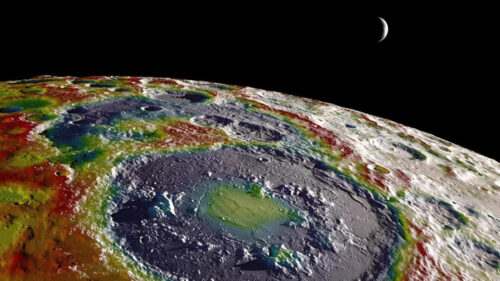
The moon, Earth’s closest neighbor, may already be home to some form of life, and NASA’s upcoming mission could provide the evidence to confirm it.
Recent research suggests that hardy microbes, possibly transported from Earth, could have survived and thrived in the challenging conditions of the lunar south pole.
As the Artemis 3 mission takes shape, scientists are preparing to explore this region and search for signs of life.
Artemis 3, set to be the first human lunar landing since 1972, marks the beginning of a series of missions to the Artemis Polar Exploration Zone, located beyond 84 degrees south latitude.
Selecting a suitable landing site poses a significant challenge, but the potential for groundbreaking discoveries, including the detection of life, is undeniable.
Scientists are particularly interested in the super-cold permanently shadowed craters found in the lunar south pole region.
These craters may harbor evidence of organisms that could have made the journey from Earth.
Prabal Saxena, a planetary researcher at NASA’s Goddard Space Flight Center, explains that recent research on the survivability of certain microbial life suggests the presence of potentially habitable niches in protected areas of airless bodies like the moon.

The lunar south pole possesses properties that could enable the survival and episodic growth of microbial life.
Researchers are currently working to identify which specific organisms are most likely to thrive in these regions and which areas within the lunar polar regions are most conducive to supporting life.
Furthermore, there is speculation about whether samples of Earth’s history may be hiding within the sun-shy lunar craters.
Some believe that fragments of our planet, known as “Earth meteorites,” could have been propelled to the moon by powerful cosmic impacts.
While the transfer of organic molecules from meteoritic sources is plausible and observed in terrestrial meteorite analysis, the transfer of microbes lacks substantial evidence.
However, scientists are keenly aware that humans play a significant role in microbial contamination.
With nearly 50 years of human presence and objects on the lunar surface, the impact of forward contamination cannot be underestimated.
Humans are considered the most likely vector, while the impact record serves as a secondary terrestrial source, albeit with less influence.
To address these concerns, researchers are focusing on protected micro-niches that provide maximum temperature and radiation protection.
By depositing hearty spores in these niches, scientists aim to ensure their survival.

Over time, continued exploration of the moon could introduce water and carbon sources to these locations, potentially leading to microbial growth.
Increased traffic to the moon, including Artemis spacecraft missions, could have unintended consequences.
Deposits of carbon dioxide and water ice in permanently shadowed regions along the flight path might compromise certain investigations.
However, our understanding of lunar ice deposition is currently limited, making these experiments intriguing possibilities for future studies.
Although a comprehensive survey of compound abundance in the lunar south pole region is unlikely before the first Artemis surface missions, the moon’s north pole is expected to be better preserved.
Nevertheless, spacecraft exhaust and transport through the lunar exosphere—the thin envelope of gases surrounding the moon—could still impact the north pole.
As plans for lunar exploration progress, the lessons learned from investigating potentially habitable niches will be valuable for future Mars exploration.

The strategy, techniques, and instrumentation developed for lunar site assessment and traverse planning could be instrumental in our quest to explore the Red Planet.
With NASA’s Artemis missions on the horizon, the possibility of discovering life on the moon becomes more tangible.
As humans venture farther into space, our understanding of the universe and the potential for extraterrestrial life continues to expand.
The upcoming Artemis 3 mission represents an exciting leap forward in our cosmic journey, bringing us closer to unraveling the mysteries of the moon and unlocking the secrets of life beyond Earth’s boundaries.
